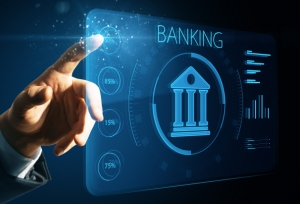By Sina Saidinayer, UK Chief Revenue Officer, Finfare, Inc
The financial services industry is experiencing a transformative shift driven by open banking. This innovation, which facilitates secure and efficient data exchange between banks and third-party providers, is reshaping financial transactions and services. In 2023, open banking transactions reached $57 billion, highlighting its expanding influence.
A New Era of Financial Empowerment
Open banking relies on application programming interfaces (APIs) to enable seamless data sharing between banks and authorized third parties. This system enhances transparency and security and gives customers greater control over their financial information. This control leads to more personalized financial services and products tailored to individual preferences.

Open banking is gaining traction in the US, fueled by increasing financial transparency and innovation demands. While the regulatory framework lags behind Europe, several banks and fintech companies are advancing open banking through voluntary APIs and partnerships. The Financial Data Exchange (FDX) is working to standardize data-sharing protocols, improving security and interoperability.
As consumers seek more seamless and personalized financial experiences, open banking is set to transform the industry by enabling more efficient data access and integration. Despite regulatory and adoption challenges, the trend toward open banking is clearly gaining strength in the US.
The Evolution of Rewards Programs
Loyalty and rewards programs have evolved from simple punch cards to sophisticated digital platforms. Today’s rewards systems are integrated into mobile apps and online platforms, making it easier for consumers to manage rewards and for businesses to gather valuable customer data.
Modern rewards programs use this data to enhance customer experiences. By tracking real-time behavior and preferences, companies can offer targeted promotions and incentives that resonate with individual consumers. This not only drives higher engagement but also fosters long-term customer loyalty.
Open Banking’s Role in Rewards Programs
The integration of open banking into rewards programs represents a significant advancement. When customers consent, access to detailed historical transactional information, spending patterns, and financial behaviors enables businesses to create highly personalized loyalty experiences. Open banking allows for crafting rewards programs that align closely with individual preferences.

By now, it is well understood that personalization is critical in today’s hyper-competitive market. Analyzing real-time data from various sources allows businesses to offer incentives that better reflect a customer’s particular interests across their everyday life. This level of customization enhances satisfaction, boosts engagement, and encourages repeat business.
As consumers see the benefit of high-quality offers, their trust in the program increases, and their willingness to share data grows. This cycle of trust drives an increased share of wallet for the business – allowing for greater interaction to move beyond personalized rewards to a deeper level of contextual rewards.
Streamlining the Rewards Experience
Open banking also simplifies the user experience. Traditional rewards programs often require manual entry of financial information or navigation through multiple platforms. Open banking gives customers the control to share their data easily beyond their traditional banking apps and platforms, allowing them to track rewards, redeem points and manage loyalty programs all within a single interface.]
Incorporating gamification elements, such as badges or achievement levels, adds an engaging dimension to rewards programs. These features make earning and redeeming rewards more interactive and enjoyable, encouraging greater user participation.
The Advantages of Open Banking for Loyalty Programs

Incorporating open banking into loyalty programs offers numerous benefits. When considering the three primary audiences, incorporating open banking into loyalty programs can create a “win-win-win” situation:
- Users will now receive hyper-contextual rewards delivering more value than traditional low-data driven, generic “personalized” offers
- Publishers of offers gain insight beyond their platform to make offerings even more attractive, leading to increased engagement
- Merchants will be able to better understand their share of wallet with a particular customer across multiple financial accounts and platforms, allowing them to increase that share while driving incremental revenue.
Data Privacy and Security: A Top Priority
With the rise of open banking and data sharing, ensuring privacy and security is paramount. Regulations like the General Data Protection Regulation (GDPR) in Europe and the California Consumer Privacy Act (CCPA) in the US set stringent data collection, storage, and management standards. These regulations are crucial for protecting consumer information from unauthorized access and misuse.

To comply with these standards, businesses must implement robust data security measures, including encrypted communication channels, secure APIs, and strong authentication protocols. Consent management frameworks are also essential, allowing customers to control how their data is shared and used, reinforcing trust in the system.
The Future of Rewards Programs with Open Banking
Looking forward, open banking is set to revolutionize the rewards landscape further. Growing partnerships between banks and retailers are poised to redefine traditional point-based systems, offering more dynamic and personalized reward options. By leveraging real-time financial data, these partnerships can create more relevant rewards programs that appeal to individual customers.
This evolution will also enhance convenience. Aside from enhanced contextual rewards, using bank data in rewards programs can also streamline user experiences, eliminating the need for separate accounts or cards. Customers can easily access and manage rewards, fostering greater engagement and satisfaction.
Transforming the Loyalty Landscape

Open banking has the potential to transform rewards programs fundamentally. By leveraging APIs and data sharing, businesses can offer personalized financial incentives informed by real-time banking data. This transformation enhances customer experience and gives businesses critical insights for effective segmentation and targeting.
As open banking evolves, its impact on rewards programs will undoubtedly grow, shaping a future where loyalty and financial services are seamlessly integrated. This new paradigm promises a more personalized, secure, and engaging rewards experience, setting a new standard in customer loyalty and financial innovation.
About the Author

Sina Saidinayer is the UK Chief Revenue Officer at Finfare, Inc, which aims to simplify financial management by empowering businesses and consumers for financial growth and stability. With offices in London and Irvine, CA, Finfare’s ecosystem includes Finfare Money (a charge card and expense management platform with rewards) and Finfare Connect (a rewards platform). Finfare Connect is a leading rewards platform that helps businesses engage and retain customers through personalized offers. Utilizing payment-linked data and turnkey technology, companies can quickly launch campaigns, provide instant personalization, and use white-label portals to drive revenue growth.
Recent PaymentsNEXT news
Innovating finance: The convergence of telecoms and banking
Inside Brazil’s Fintech Revolution – How Pix is Pointing the Way Forward for Global Fintech

